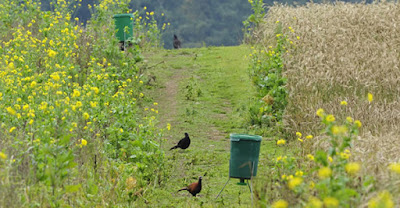OK, due to a combination of factors I have somewhat neglected posting on the blog. That doesn’t mean that I have been sat at home twiddling my thumbs or watching daytime telly. Does anyone still watch daytime telly to be entertained or informed? Definitely not the latter. Sources of news and entertainment on the Internet are more varied where by hitting the right buttons, the actuality & truth, as opposed to mainstream media who like to tell us what to believe, is there for all to discover. BBC, ITV, C4, Sky – they are all liars with biased and well-oiled axes to grind.
Today there's a selection of pictures shot in-between bouts of bad weather that hit the North West from January and into May when I ventured out with bins and camera if the sun appeared and winds subsided. I felt so sorry for our local farming community when days and weeks of rain swallowed their crop fields; more knocks to a hard-working fraternity who receive little or no credit for their contribution to our British Way of Life.
My mostly mornings with camera, plus a couple of ringing sessions confirmed that all is not well with birds. Where this year are Swifts, Sedge Warblers, Blackcaps, Swallows, Whitethroats, House Martins and Willow Warblers? - to name but a handful of supposedly “common species”. Luckily, Wheatears and ever curious Pied Wagtails seemed in good supply with the jury out on seemingly low numbers of finches and buntings.
Adult Swallow
Whitethroat
Sedge Warbler
Wheatear
Pied Wagtail
Linnet
Reed Bunting
Pied Wagtail - looking for the other one
While saturated fields held no joy for farmers, a few waders took advantage by managing to rear chicks on fields into which a tractor would sink. Out Cockerham way a pair of roadside Lapwings I watched for weeks managed to grow all four chicks to adult size. All the time with crows looking on but chased off by sharp eyed parent Lapwings.
Lapwing
Lapwing chick
Carrion Crow
At another field nearby a pair of Shoveler took up residence where a male left his mate in an adjacent ditch while he stole minutes alone at a water flash. .
Shoveler
Finally and into June the ground in parts dried out by which time both Oystercatchers and Lapwings could search the recently ploughed and now drying clumps of earth.
Oystercatcher
Male Lapwing - dig that crest!
And then in late June for a week and a day Sue and I ate out in the garden, enjoying the evening sunlight. A chance to try our own versions of Greek classics, Lamb Kleftico, Baked Feta and souvlakis together with a bottle of Ampelicious that too quickly ran out, the bottle courtesy of our lovely friends, Family Karaboula at Maistrali.
Ampelicious Red
Bouyiourdi - Baked Feta
The first week of July. There's more rain in the forecast but I will be out whenever I can.
Did you click the pics to receive the correct message and see the full picture?
Thank You. Another Bird Blog is back soon.

























































.jpeg)








.jpg)












